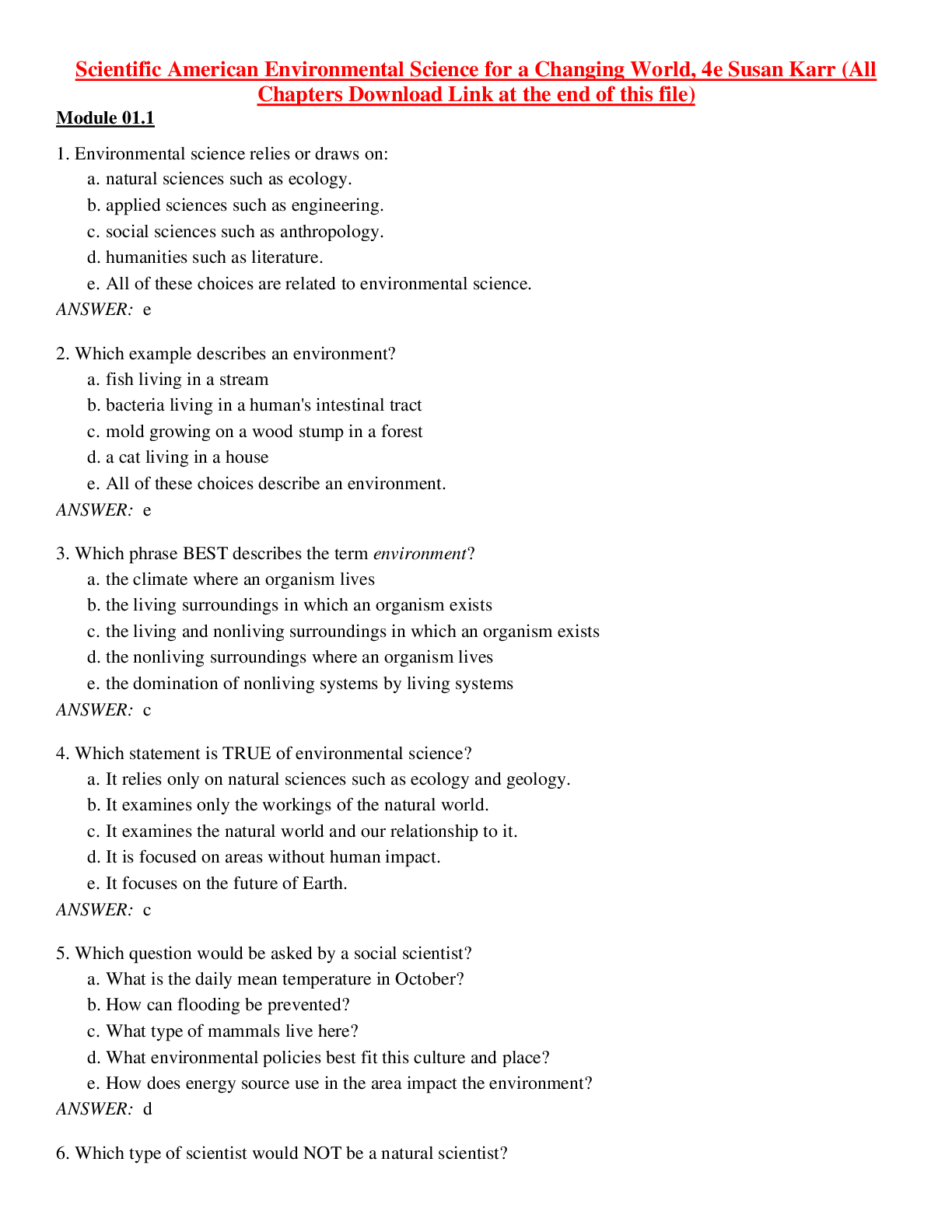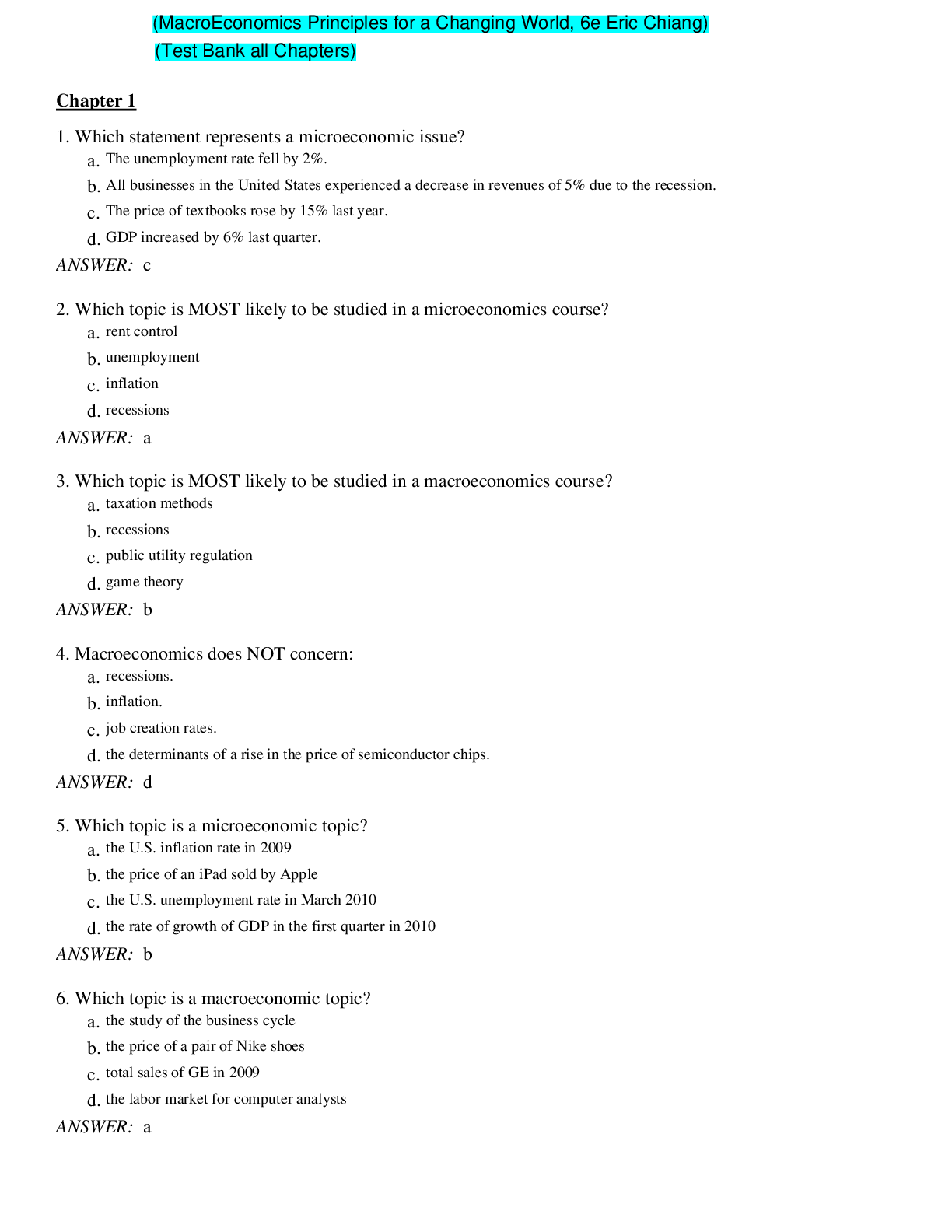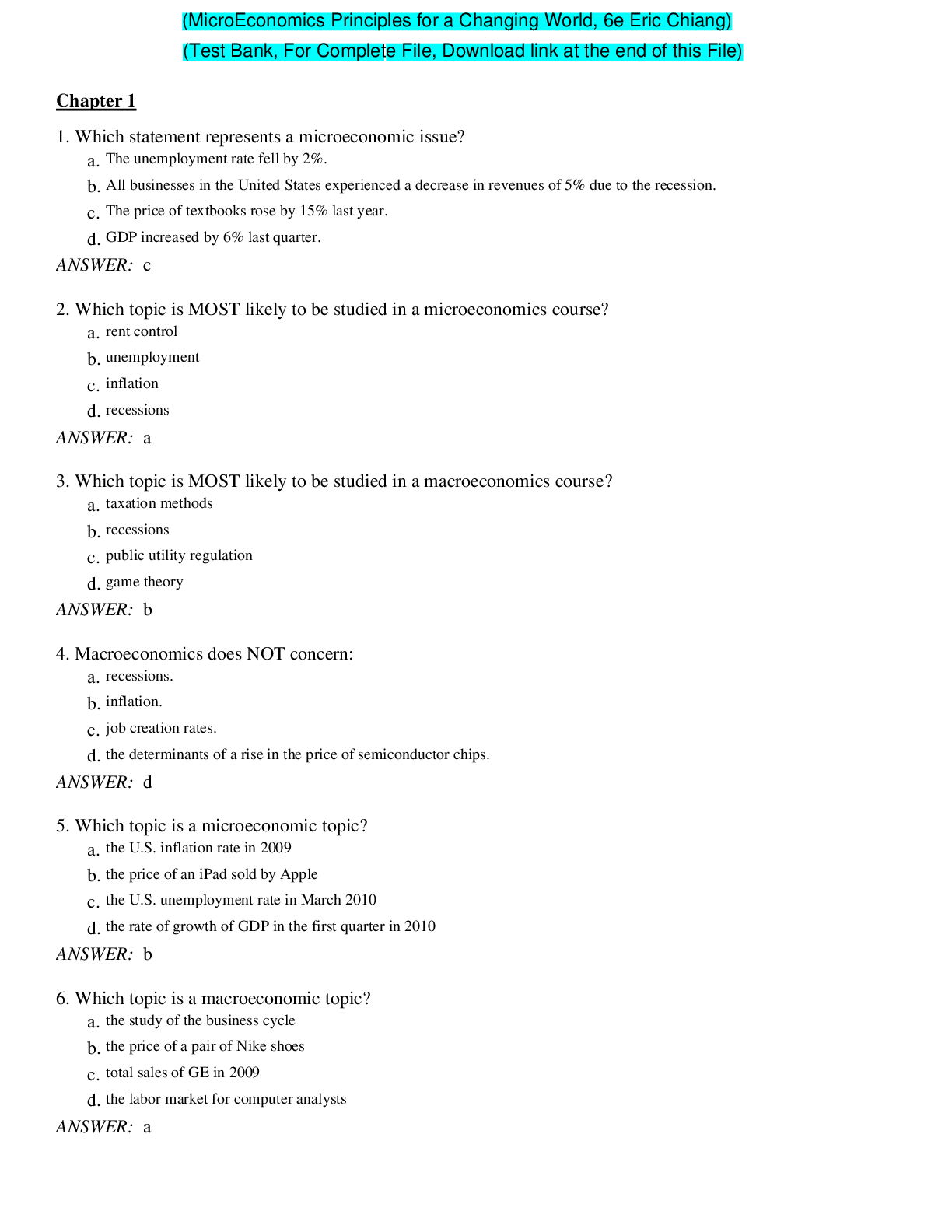Health Care > TEST BANK > Test Bank Scientific American: Nutrition for a Changing World Chapter 10 Fat-Soluble Vitamins Multip (All)
Test Bank Scientific American: Nutrition for a Changing World Chapter 10 Fat-Soluble Vitamins Multiple-Choice Questions
Document Content and Description Below
1. Which is not a fat-soluble vitamin? A. tocopherol B. carotenoids C. ascorbic acid D. retinoic acid E. vitamin K Answer: C Type: Comprehension Difficulty: Hard Learning Objective: Identify ... the fat-soluble vitamins and their primary functions (Infographic 10.1) Keywords: tocopherol, carotenoids, retinoids, vitamin K 2. Which vitamin can be synthesized in significant amounts by humans and, therefore, may not be essential? A. vitamin D B. vitamin E C. vitamin K D. retinoids E. carotenoids Answer: A Type: Comprehension Difficulty: Medium Learning Objective: Describe the role of vitamin D in blood calcium regulation (Infographic 10.4) Keywords: vitamin D, UV radiation, sunlight, metabolism 3. Fat-soluble vitamins are mainly stored in A. the gallbladder. B. the gallbladder and liver. C. skeletal muscles and liver. D. skeletal muscles and fatty tissues. E. fatty tissues and liver. Answer: E Type: Comprehension Difficulty: Medium Learning Objective: Describe the properties of the fat-soluble vitamins (Infographic 10.2) Keywords: storage, fatty tissues, liver 4. Which must be present for fat-soluble vitamins to be absorbed? A. calcium and intrinsic factor B. calcium and LDL C. dietary lipids and bile D. dietary lipids and LDL E. dietary lipids and insulin Answer: C Type: Conceptualize Learning Objective: Describe the properties of the fat-soluble vitamins (Infographic 10.2) Keywords: absorption, dietary lipids, bile 5. For absorption, fat-soluble vitamins are packed into _____ and transported into the _____. A. chylomicrons; blood vessels B. LDLs; blood vessels C. chylomicrons; lymph D. LDLs; lymph E. VLDLs; lymph Answer: C Type: Comprehension Learning Objective: Describe the properties of the fat-soluble vitamins (Infographic 10.2) Keywords: transport, lymph, chylomicron 6. Which is NOT a function of vitamin D? A. blood calcium regulation B. bone growth and maintenance C. immunity D. antioxidant E. cell development Answer: D Type: Analysis Difficulty: Medium Learning Objective: Identify the fat-soluble vitamins and their primary functions (Infographic 10.1) Keywords: vitamin D, bone, immunity, calcium balance, cell development 7. The milk fortification program was instituted to A. reduce blindness due to vitamin A deficiency. B. reduce rickets due to vitamin D deficiency. C. reduce osteomalacia due to vitamin D deficiency. D. prevent hemorrhaging in infants due to vitamin K deficiency. E. increase milk shelf-life by adding vitamin E. Answer: B Type: Analysis Difficulty: Medium Concept: vitamin D fortification Keywords: rickets, vitamin D fortification, milk 8. Which vitamin combination does NOT have antioxidant properties? A. vitamin K and vitamin D B. vitamin E and vitamin C C. ascorbic acid and carotenoids D. vitamin E and xanthophylls E. tocopherol and beta-carotene Answer: A Type: Analysis Difficulty: Medium Learning Objective: Identify the fat-soluble vitamins and their primary functions (Infographic 10.1) Keywords: antioxidant, free radicals, carotenoids, tocopherol 9. Which does NOT play a role in maintaining blood concentrations when calcium levels are low? A. parathyroid hormone increasing kidney production of active vitamin D B. parathyroid hormone increasing intestinal production of active vitamin D C. activated vitamin D increasing intestinal absorption calcium D. activated vitamin D decreasing kidney excretion of calcium E. activated vitamin D increasing release of calcium from the bone Answer: B Type: Conceptualize Difficulty: Medium Learning Objective: Describe the role of vitamin D in blood calcium regulation (Infographic 10.4) Keywords: parathyroid hormone, bone, kidneys 10. Which is the richest food source of vitamin D? A. salmon (3 oz) B. milk (1 cup) C. fortified orange juice (1 cup) D. cheese (1 slice) E. egg (1 large) Answer: A Type: Application Difficulty: Medium Learning Objective: Identify excellent dietary sources of the fat-soluble vitamins (Infographics 10.3, 10.5, 10.9, and 10.11) Keywords: food sources, vitamin D, fatty fish 11. Vitamin D is converted to its active form by the A. skin and small intestine. B. skin and liver. C. fat tissue and liver. D. small intestines and kidneys. E. kidneys and liver. Answer: D Type: Comprehension Difficulty: Medium Learning Objective: Describe the role of vitamin D in blood calcium regulation (Infographic 10.4) Keywords: vitamin D, activation, liver, kidneys 12. Vitamin D deficiency in adults results in A. rickets. B. osteomalacia. C. hypervitaminosis D. D. oxidative damage. E. cancer. Answer: B Type: Comprehension Difficulty: Medium Concept: vitamin deficiency Keywords: adult, osteomalacia 13. An early sign of vitamin A deficiency is A. carotenemia. B. hypervitaminosis A. C. night blindness. D. infectious diseases. E. keratinization. Answer: C Type: Application Difficulty: Medium Concept: vitamin deficiency Keywords: night blindness, vitamin A deficiency 14. Which is an example of provitamin A? A. retinoic acid B. retinol C. retinal D. tocopherol E. beta-carotene Answer: E Type: Knowledge Difficulty: Easy Concept: vitamin classification [Show More]
Last updated: 1 year ago
Preview 1 out of 14 pages
.png)
Reviews( 0 )
Document information
Connected school, study & course
About the document
Uploaded On
Sep 10, 2021
Number of pages
14
Written in
Additional information
This document has been written for:
Uploaded
Sep 10, 2021
Downloads
0
Views
68
.png)


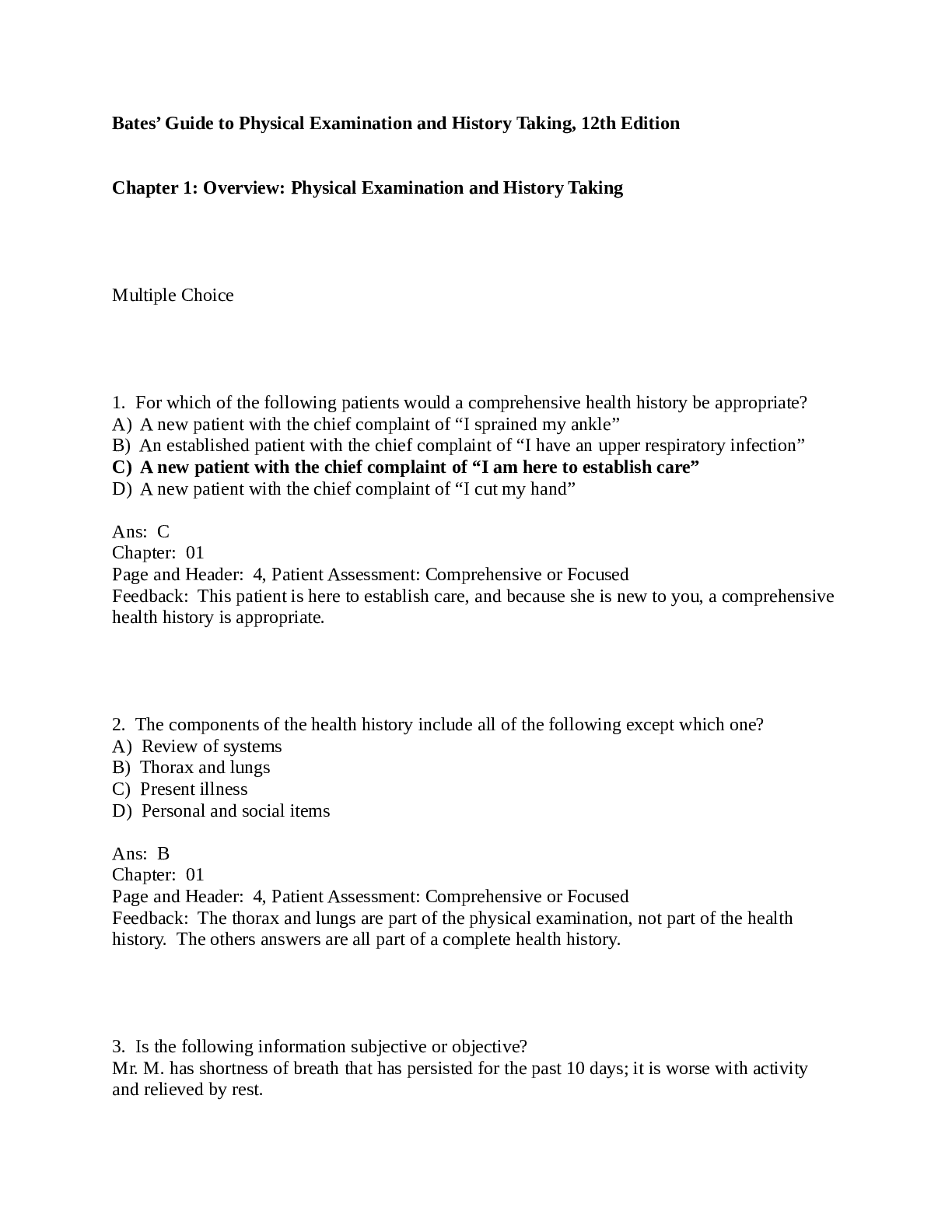
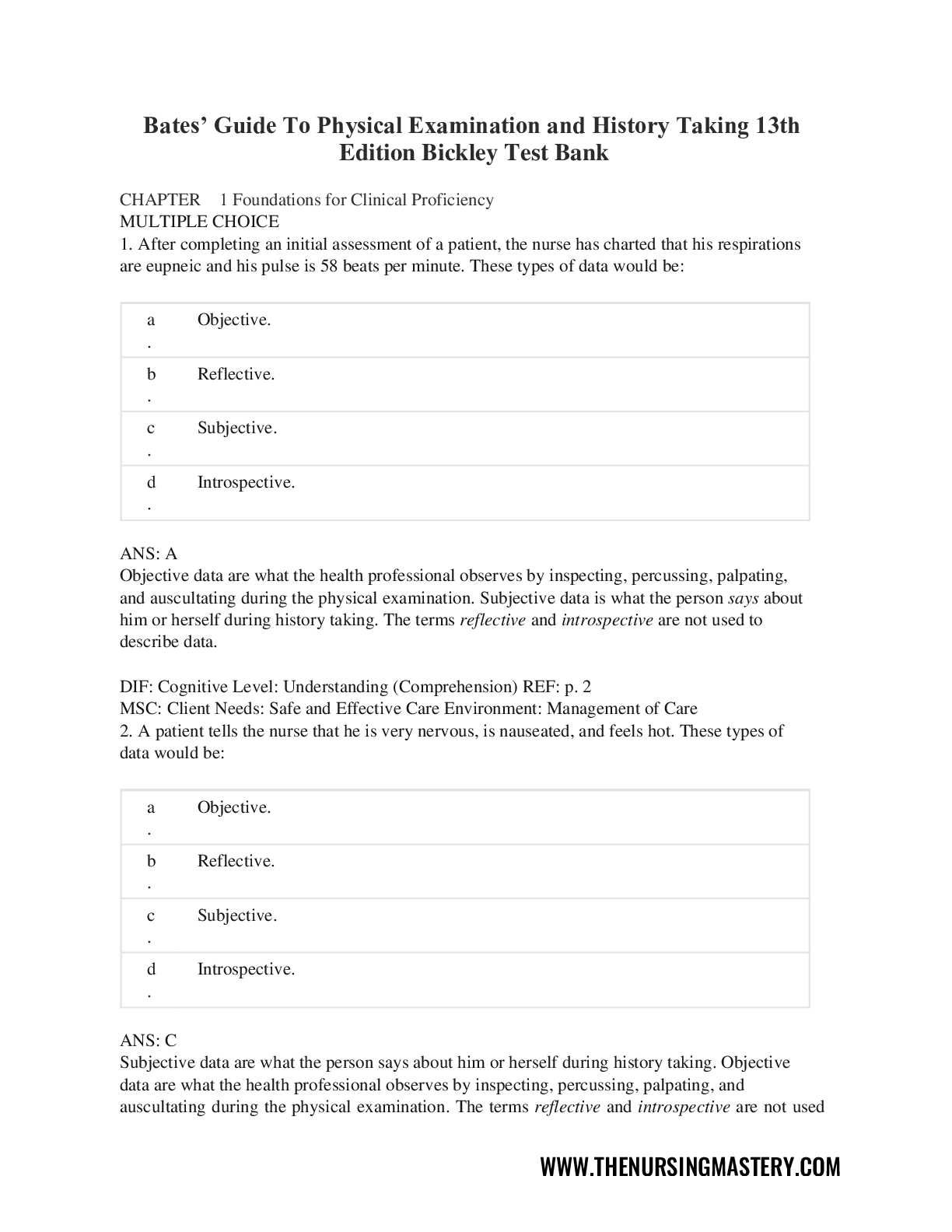
.png)
.png)
.png)

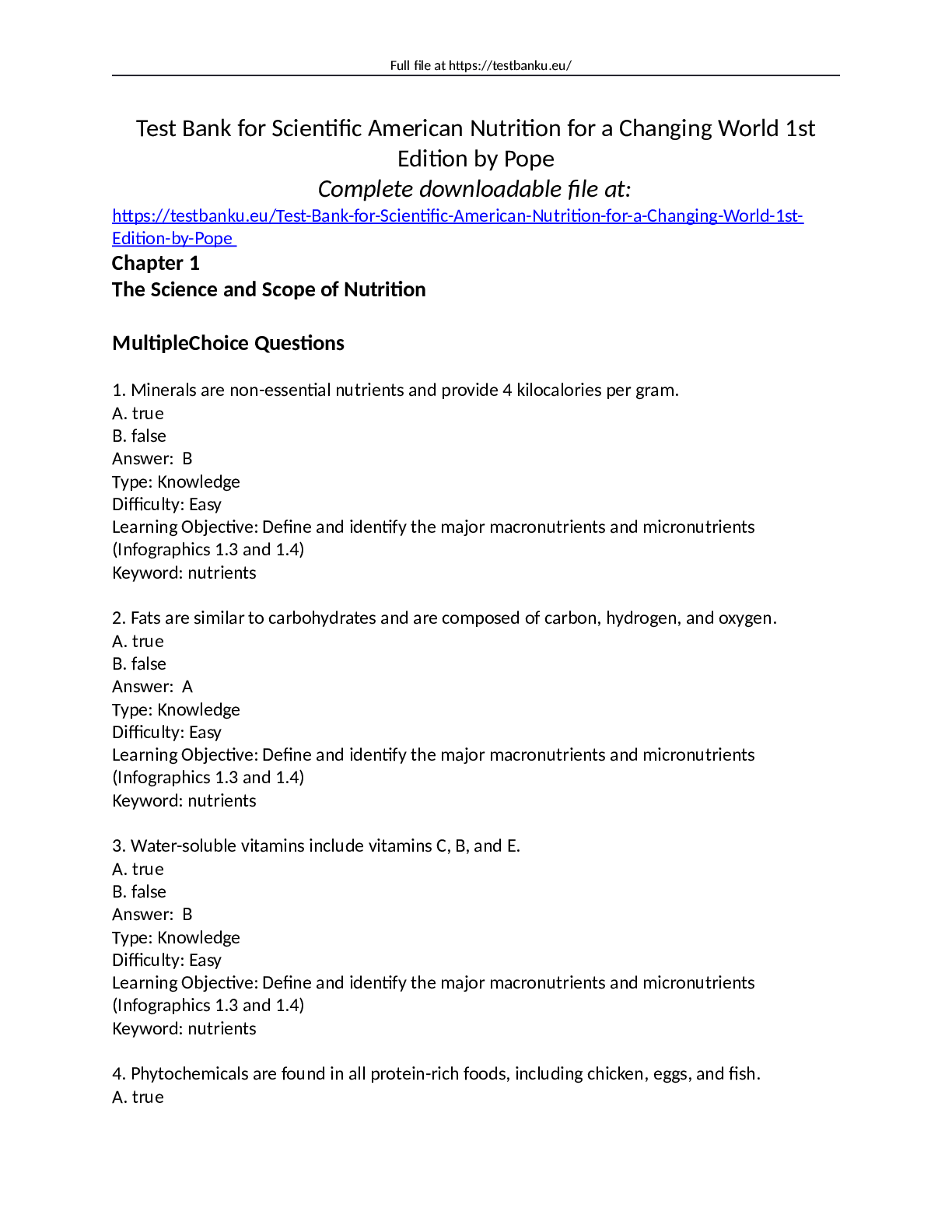
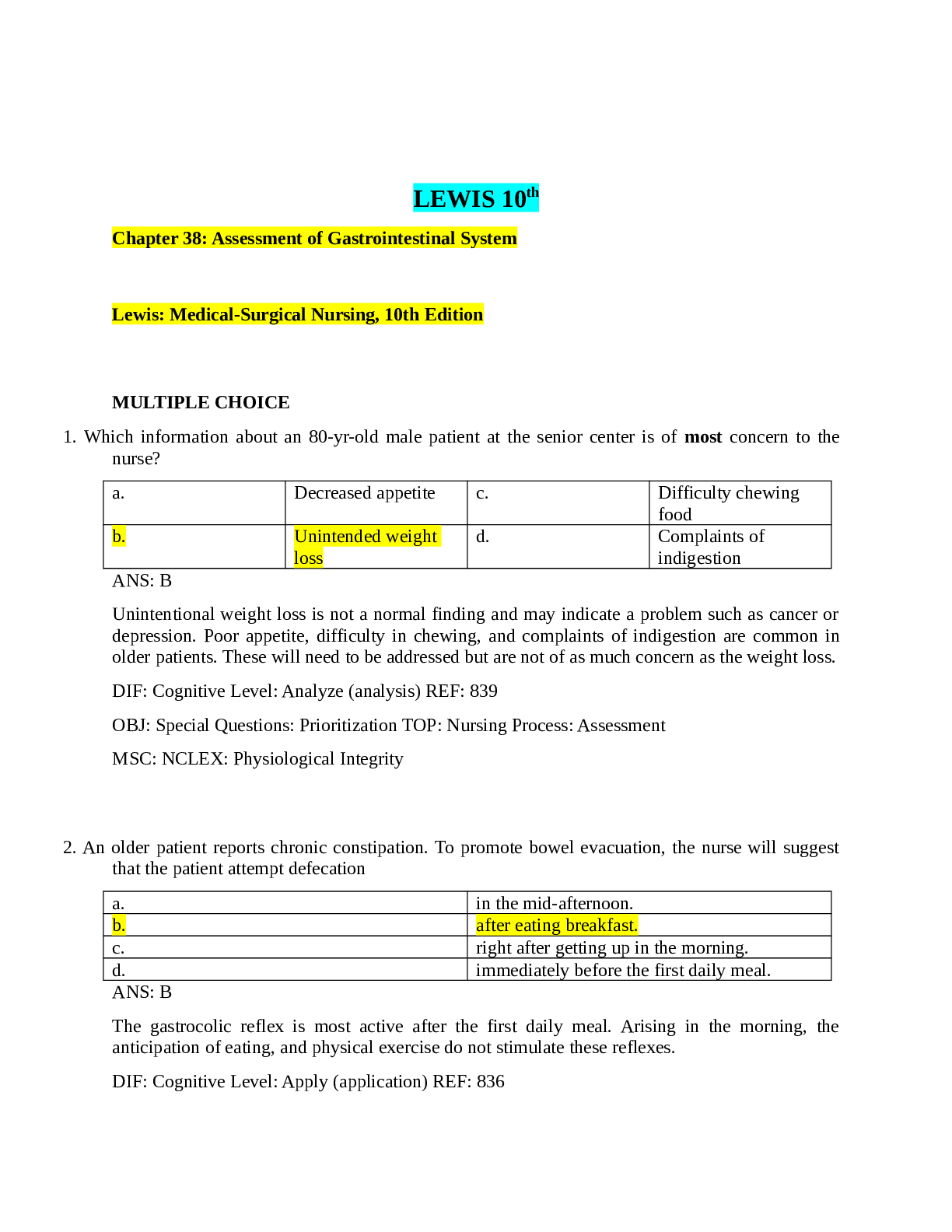

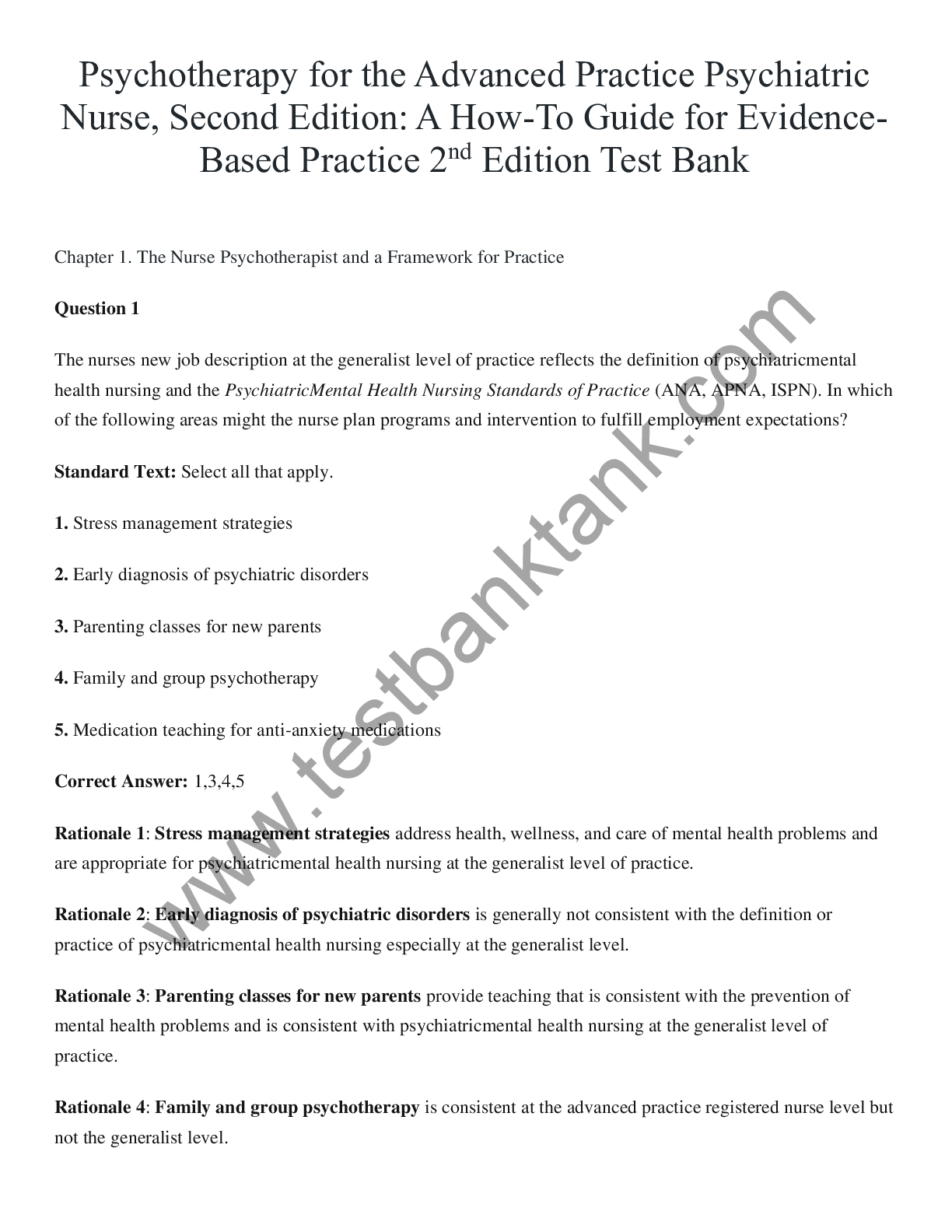
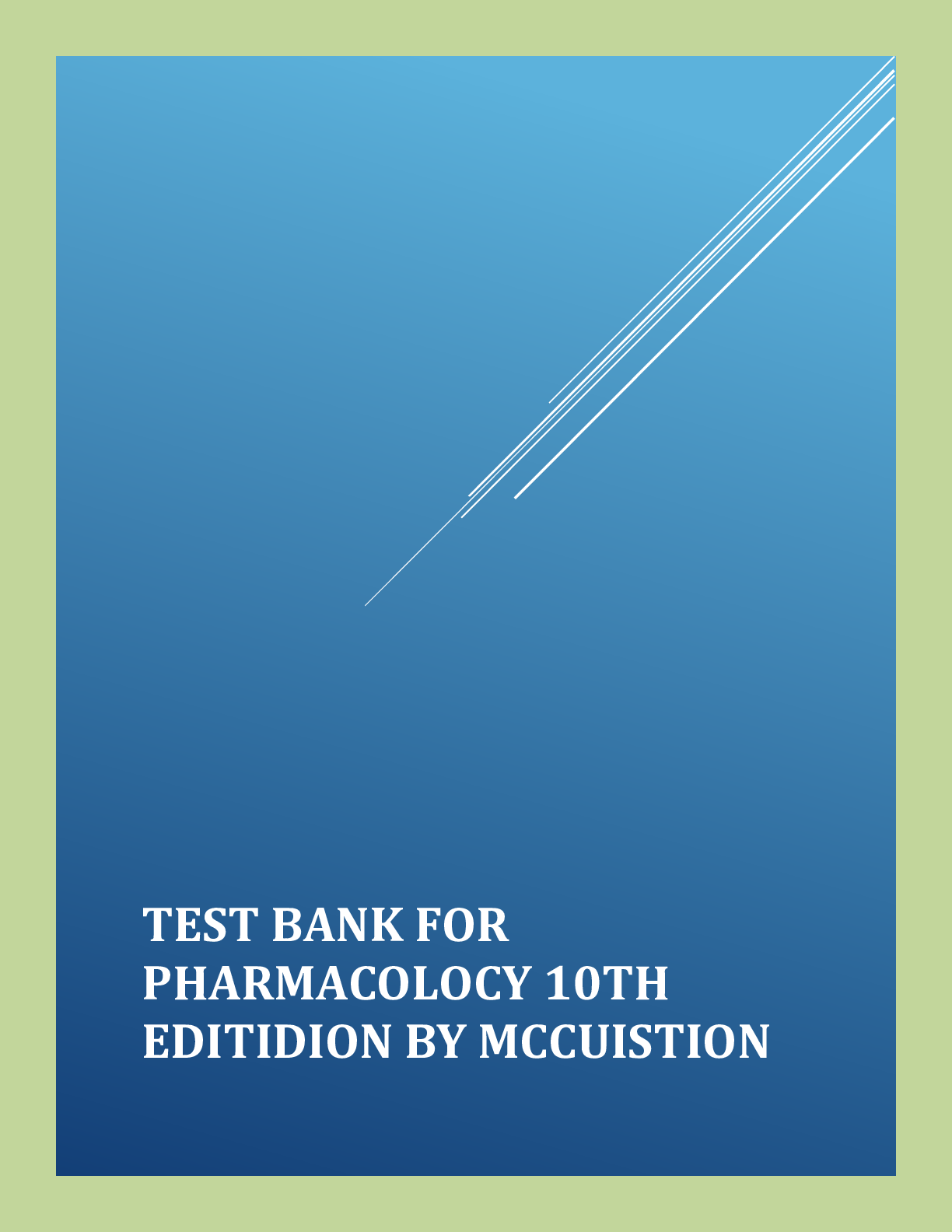
.png)

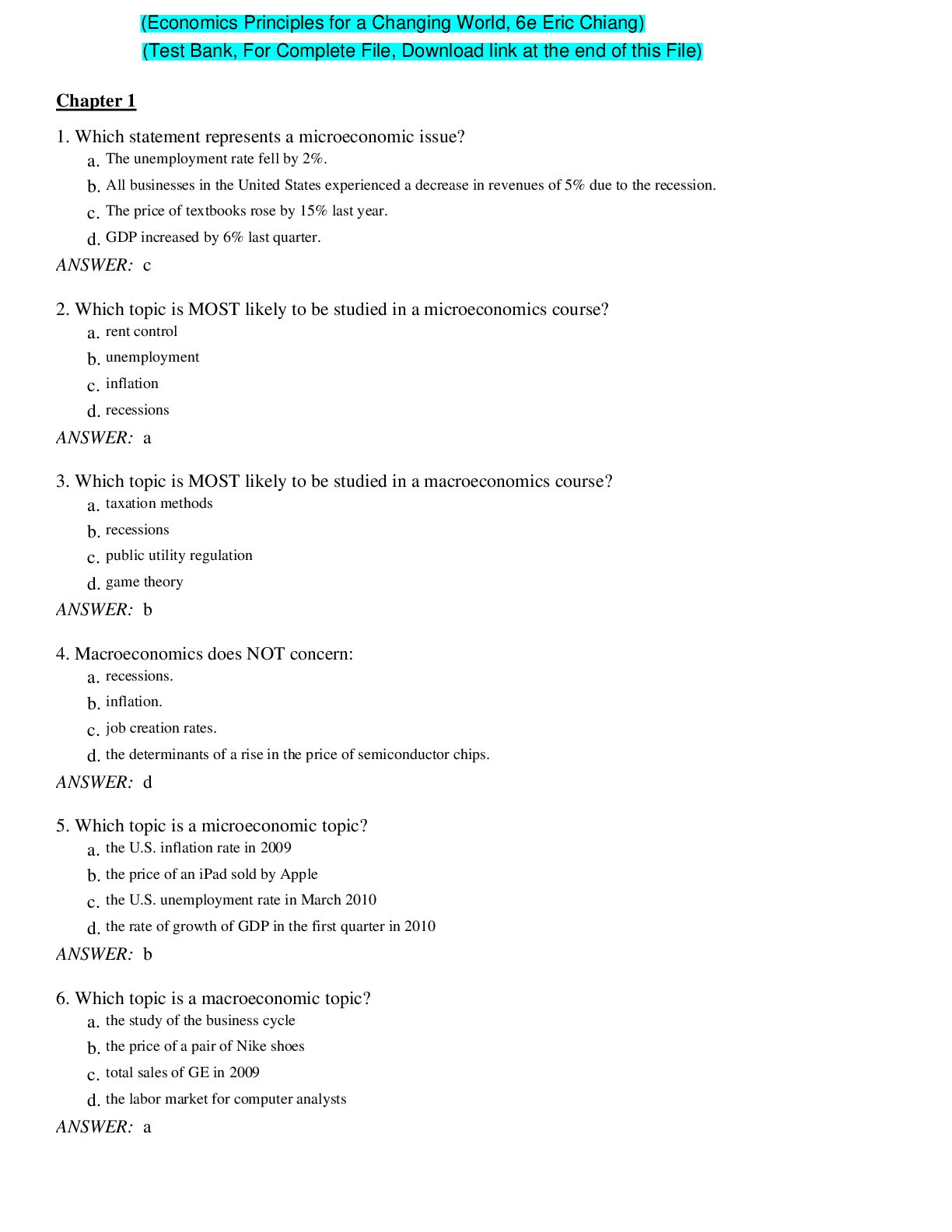
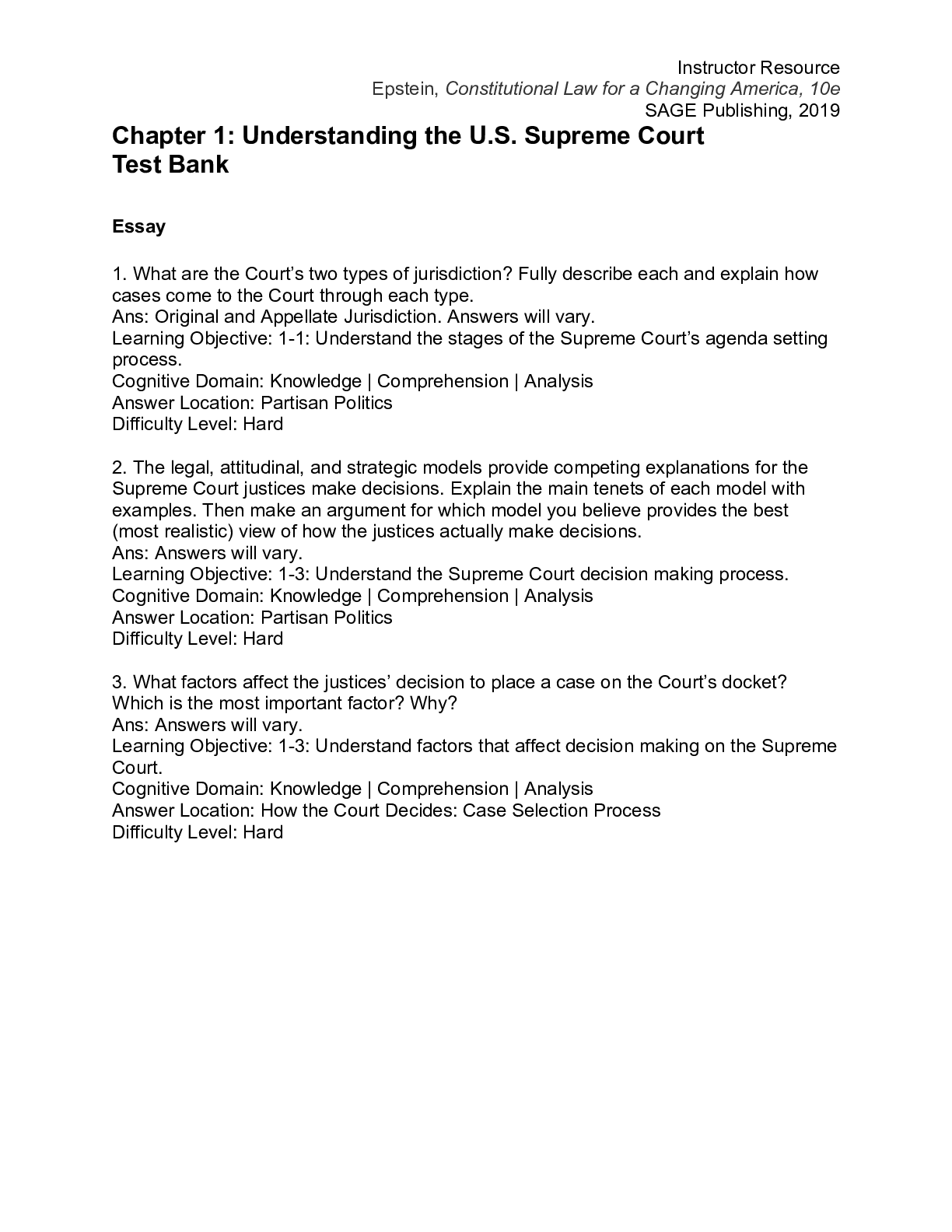
.png)
.png)
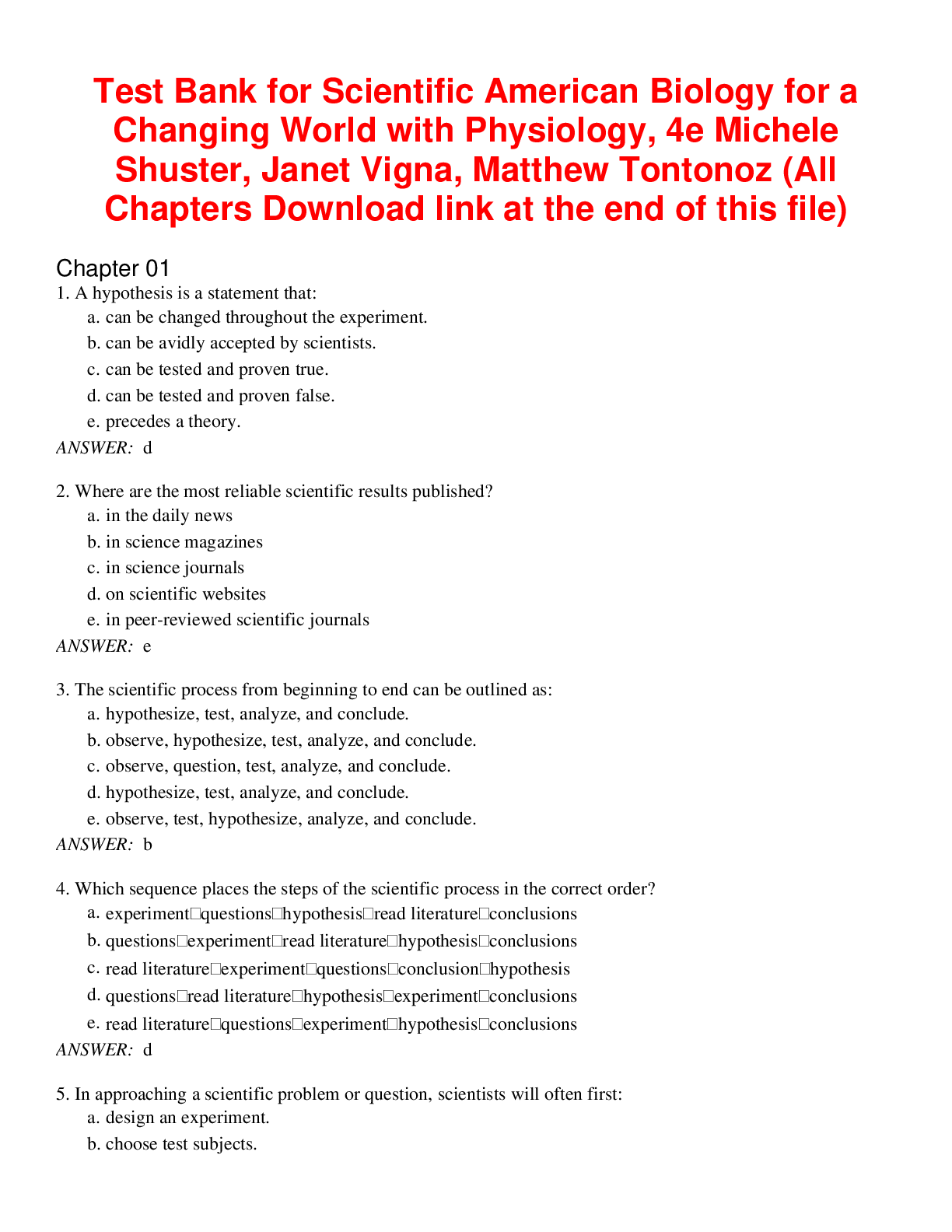
.png)
.png)
.png)
.png)
.png)
.png)
.png)
.png)

